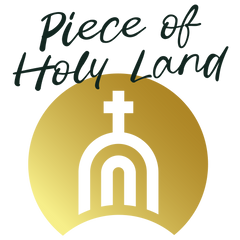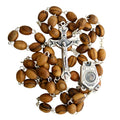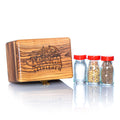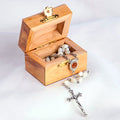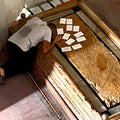Explore the Mystery of the Chapel of Adam Beneath Golgotha
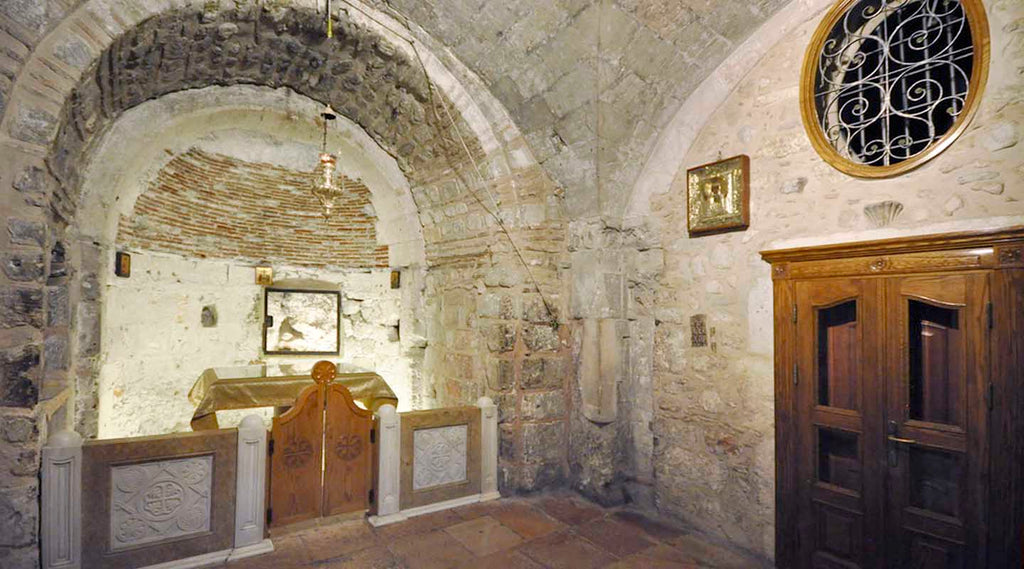
Uncovering the Deep Symbolism Beneath the Cross of Christ
Introduction: The Hidden Sacred Ground Beneath the Cross
Deep within the Church of the Holy Sepulchre, under the traditional site of Christ’s crucifixion, lies a small and powerful space known as the Chapel of Adam. Shrouded in ancient symbolism and theological reflection, the Chapel of Adam is more than just an architectural curiosity, it embodies a core belief of Christian theology: that through the death of Christ, humanity receives redemption.
For pilgrims and believers alike, this chapel is a space of deep reflection and spiritual reverence. It is also the symbolic setting for our Golgotha Prayer Request service, where prayers submitted from around the world are personally delivered to this holiest of Christian locations.
The Meaning Behind the Name: Who Was Adam?
According to early Christian tradition, the Chapel of Adam is named after the first man, Adam, who by legend, was buried beneath Golgotha. The name “Golgotha” itself means “Place of the Skull,” and early Christian scholars believed the skull of Adam rested directly beneath the site of the crucifixion.
This symbolism is rich with meaning: the new Adam (Christ) dies above the old Adam (humanity), signifying the restoration of mankind through divine sacrifice. The blood of Christ, shed on the cross, is said to have trickled down to the buried bones of Adam, symbolizing redemption flowing through history.
Architecture and Atmosphere of the Chapel
The Chapel of Adam is located beneath the Greek Orthodox Calvary altar and is often overshadowed by the grandeur of the upper Golgotha chapels. Yet its somber and intimate setting is where many pilgrims pause for silent prayer and contemplation.
A glass panel in the chapel reveals a natural crack in the rock, believed to be caused by the earthquake mentioned in the Gospels (Matthew 27:51) at the moment of Jesus’ death. This crack further enhances the symbolic connection between the Crucifixion and the redemption of all humanity.
Through our Golgotha Prayer Request service, the prayers you send are laid in this sacred space, joining the long history of intercession that has taken place at the foot of the cross.
Why This Chapel Matters Today
In modern Christian thought, the Chapel of Adam represents our own personal journey—from sin to salvation. The chapel reminds us that no matter how far we fall, Christ’s death reaches down into the depths to redeem us.
Praying at Golgotha or submitting a prayer request to this location holds deep spiritual meaning. For those unable to physically visit, sending a Golgotha Prayer Request is a powerful way to participate in this sacred history.
These prayers, submitted through Piece of Holy Land, are personally delivered to the Church of the Holy Sepulchre, offering a direct spiritual connection to the site of Christ’s Passion.
A Place of Global and Eternal Prayer
Throughout the centuries, believers from every corner of the world have knelt in this chapel, offering prayers for healing, peace, and forgiveness. Today, you can be part of that unbroken chain of faith.
Whether you're praying for yourself, your loved ones, or global peace, submitting a Golgotha Prayer Request is an act of faith rooted in tradition and sacred geography.
If you're moved by the idea of placing your intentions at the very base of Christ’s cross, we invite you to join our growing community of believers who trust in the power of prayer.
Prayer Requests as a Form of Pilgrimage
While a physical pilgrimage to the Holy Land may not be possible for everyone, participating through prayer is spiritually powerful. The Chapel of Adam becomes a bridge between the earthly and the divine.
Sending a Golgotha Prayer Request is a modern-day pilgrimage, connecting your intentions to the soil soaked in prayer, history, and salvation.
This sacred soil of Jerusalem, often called “Holy Soil,” is a deeply revered element in Christian devotional life. Collected respectfully from the vicinity of the Church of the Holy Sepulchre, it symbolizes the physical ground upon which Jesus walked, suffered, died, and rose again. Our Holy Soil with Comfort Cross is a tangible reminder of this connection, beautifully paired with hand-carved olive wood, itself a biblical symbol of peace, endurance, and faith.
The Many Chapels Within the Church
While the Chapel of Adam holds particular spiritual weight, the Church of the Holy Sepulchre is home to several other chapels that mark key events of Christ’s Passion and Resurrection:
-
The Chapel of Golgotha (Calvary): Commemorating the place of the crucifixion.
-
The Stone of Anointing: Where Jesus’ body was prepared for burial.
-
The Aedicule: Housing the empty tomb of Christ.
-
The Chapel of the Finding of the Cross: Marking the place where St. Helena is said to have found the True Cross.
-
The Chapel of the Apparition: Where Jesus is believed to have appeared to Mary.
-
The Chapel of the Angel: Just outside the Holy Sepulchre, referencing the angel’s role in the Resurrection.
Each of these chapels forms a rich mosaic of Christian theology and history, drawing pilgrims into deeper contemplation of their faith journey.
A Sacred Invitation
The Chapel of Adam invites us to contemplate our shared human story, one that begins with Adam and finds fulfillment in Christ. Through the cross, God reaches down into our brokenness and raises us up.
By submitting a Golgotha Prayer Request, you can spiritually enter this sacred site and participate in an act of timeless intercession. Let your voice echo in the most sacred corner of Jerusalem, where death was conquered by love. And for those who wish to carry a piece of this sacred tradition with them, the Holy Soil with Comfort Cross offers a meaningful connection, uniting Jerusalem’s sacred ground with the enduring beauty of olive wood.
Frequently Asked Questions About the Chapel of Adam and Golgotha
Q: What is the Chapel of Adam, and where is it located?
The Chapel of Adam is located beneath the site of the Crucifixion within the Church of the Holy Sepulchre in Jerusalem. It is directly below the altar of Calvary and is traditionally believed to be the burial place of Adam, the first man.
Q: Why is it called the “Chapel of Adam”?
According to early Christian tradition, Adam was buried beneath Golgotha, the place of Jesus’ crucifixion. This belief symbolises that through Christ’s death, the sin of Adam is redeemed, connecting the first man to the Saviour of mankind.
Q: What is the spiritual significance of the crack in the rock shown in the chapel?
A visible crack in the rock beneath the altar is said to be caused by the earthquake that occurred at the moment of Christ’s death (Matthew 27:51). It powerfully symbolises the breaking of death’s hold on humanity through Christ’s sacrifice.
Q: Can I submit a prayer to the Chapel of Adam if I cannot travel to Jerusalem?
Yes! Through our Golgotha Prayer Request service, you can submit prayers that are physically delivered to this sacred location within the Church of the Holy Sepulchre.
Q: What types of prayers are appropriate to submit to Golgotha?
Prayers for healing, protection, peace, forgiveness, and personal intentions are all welcomed. Many also send prayers for loved ones, for faith renewal, or in memory of those who have passed.
Q: Is there a connection between the Chapel of Adam and Holy Soil from Jerusalem?
Yes. The Holy Soil from Jerusalem represents the sacred ground where Christ walked and suffered. It serves as a spiritual reminder of Christ’s Passion. You can receive a symbolic gift of this soil with our Holy Soil and Comfort Cross, which connects your faith journey to the sacred geography of Golgotha.
Q: Why is olive wood often used in crosses and Christian devotionals from Jerusalem?
Olive wood is native to the region and deeply symbolic in Christianity, representing peace, endurance, and the Mount of Olives, which was central in Christ’s Passion. It’s often used in crosses, comfort crosses, and devotional items to strengthen one’s spiritual connection to the Holy Land.
Q: Can prayer requests at the Chapel of Adam be considered a form of pilgrimage?
Absolutely. While not everyone can travel to Jerusalem, sending a prayer to Golgotha is a meaningful spiritual act, what many call a “prayer pilgrimage.” Your voice becomes part of the sacred history unfolding at the foot of the cross.
SHARE:

